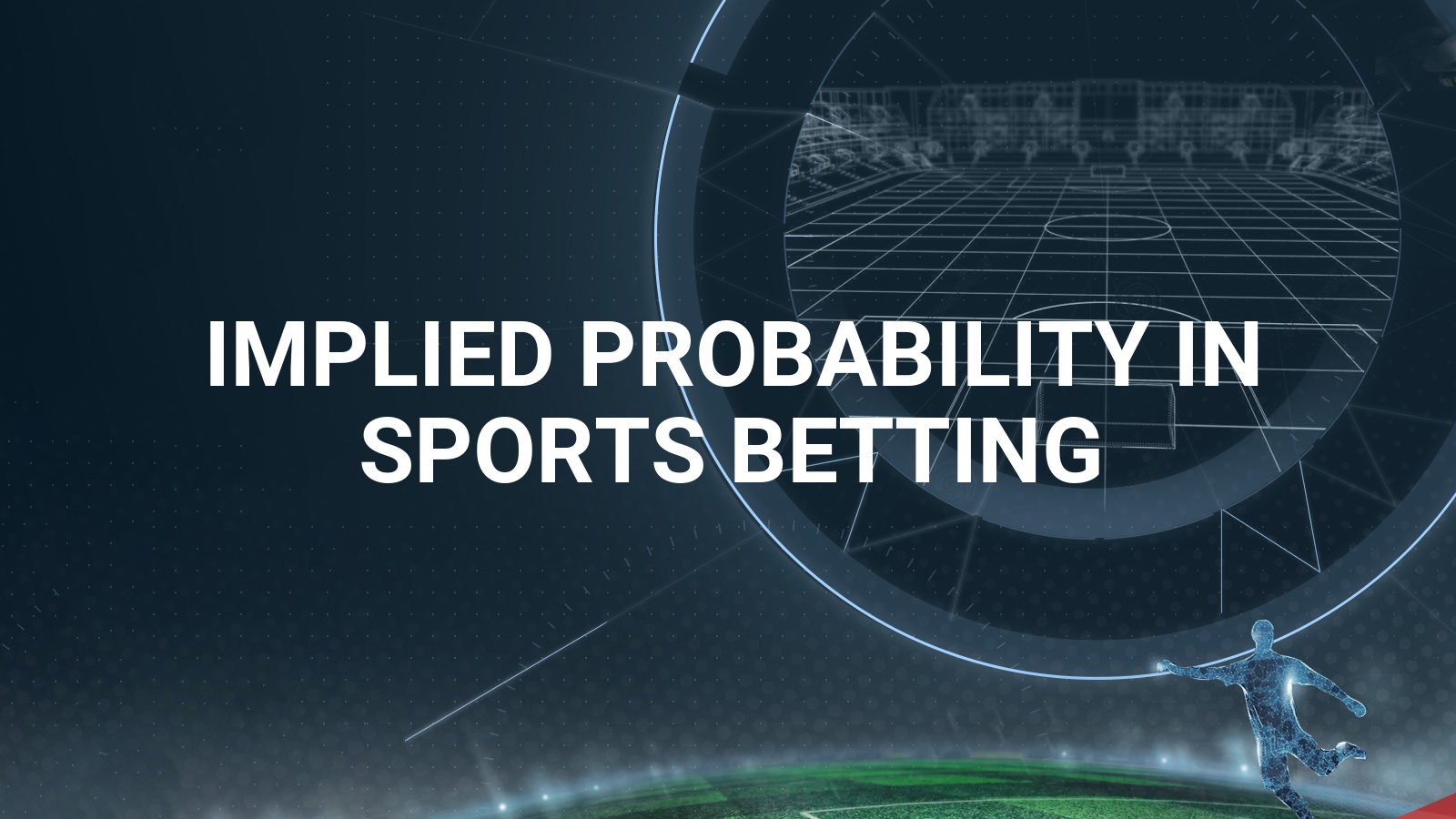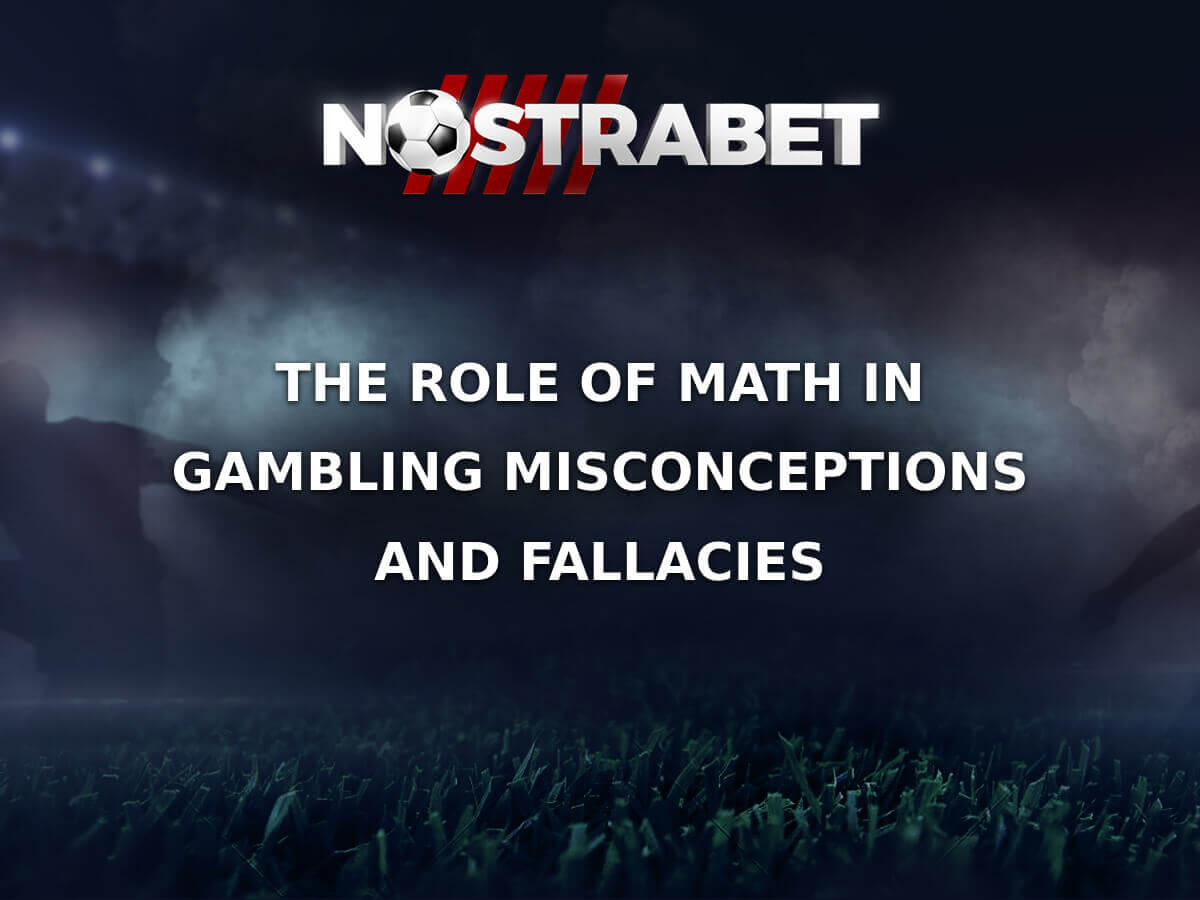Expected value is an important statistical notion and indicator in any game of chance. In particular, in sports betting, the expected value of a bet has certain specificities in regard to application. In this article, we will see how expected value is defined in sports betting, how we should interpret it correctly, and what its strategic significance is.
The General Formula of the Expected Value
Every game of chance is played by placing bets. Whether we place chips on the roulette table, roll the dice in craps, play a blackjack hand, or spin a slot machine, we place a bet. The event we are betting on is either that a specific outcome of the game will occur (like in roulette, craps, slots, video poker, or sports betting) or that we will beat the house/dealer or other real or imaginary players (like in blackjack, baccarat, poker and other card games, or backgammon).
Any bet is characterized by a stake and payout odds. If a mathematical probability can be assigned to the event we are betting on, then the general formula for the expected value (EV) or expectation of a bet, in its most common form, is:
EV = (probability of winning x net profit if you win) + (probability of losing x loss if you lose)
(where the loss is considered a negative number)
The payout odds of the bet are embedded in the formula of the EV above, along with the stake, in the values of the net profit and loss.
The EV of a bet reflects the overall profit or loss that the bet brings to you in the long run. But this factual interpretation should not be taken literally. The EV is a statistical average due to the presence of probability in its definition. It is associated with a bet and characterizes it, but it cannot yield any prediction on your profit or loss with that bet over a definite number of games. It just says that the higher the number of such bets placed under the same conditions, your real profit or loss approaches the theoretical value of the EV.
The EV can also be expressed as a ratio to the stake as a percentage.
EV(%) = EV/stake (%)
In this percentage form, the EV does not apply to a particular stake but to any stake or an overall stake, and its value is not followed by any currency.
For example, an EV of –2% of a bet means that the bet will bring you an overall loss of 2% of your wagers in the long run.
The EV can also be expressed in terms of the house’s profit by the notion of house edge or house advantage:
The opposite (as sign) of the EV is the house edge (HE): HE = –EV
When the EV is negative, the HE is positive, and this is statistical insurance for the house that the bet will bring them profit in the long run.
The Formula of the EV in Sports Betting
In sports betting, the same formula for the EV applies; however, the concrete calculation of the EV of a bet is relative to probability. In sports betting, for a specific bet, we know its payout odds, but we don’t have a mathematical probability of that event happening, which to input in the formula of the EV.
In casino games, we can compute precisely the probability of any outcome, as we know all the characteristics of the game and how the possible outcomes are distributed in the sample space of the random experiment of generating the outcomes (except in slots, whose configuration is usually kept secret). In sports betting, the outcome of an event is determined by a multitude of physical factors that cannot be quantified mathematically in their entirety (and not even detected). This is why such events cannot be described stochastically so that a precise probability can be defined given a precise sample space. They are far more deterministic than stochastic; however, various subjective or experimental measures can be defined to account for the likelihood of the outcomes and play the role of a subjective probability.
Some measures of this sort are given by players’ own analysis and information. Besides, several software algorithms have been developed for assessing chances for the various outcomes of a sports event to occur. Such programs provide objective or subjective likelihoods but not mathematical probabilities or what we usually call ‘true odds’.
Using objective likelihood as a substitute for the true odds is a way of estimating the EV of a sports bet.
Let’s write the general formula of EV for a sports bet.
If p denotes the probability of the predicted outcome, s denotes the stake, and o denotes the payout odds (assumed in decimal format), then the expected value of this bet is:
EV = [p x (o – 1) x s] – [(1 – p) x s] = s x (p x o – 1)
or, as a percentage of the stake:
EV(%) = p x o – 1 (%)
If we equal to zero the expression of the EV, we see that this would happen if and only if p x o equals 1, that is, if the true odds (p expressed in odds format) were equal to payout (bookie’s) odds (o). A bet obeying that condition would bring zero profit in the long run, and the bettor would break even with the bookie with that kind of bet.
If we replace p by the implied probability, the product p x o will be 1 and as such EV = 0, as the implied probability is just another way to express the payout odds.
For doing a concrete, relevant calculation of the EV, we should input an objective likelihood as true odds by our own estimation or as a result of using specialized software.
Example:
Assume you want to estimate the EV of a bet on the favourite team in a soccer match, and the odds for the victory of that team are 1.68. Say that by your analysis or using the software, you came to a 65% probability of the victory of that team. 1.66 decimal odds convert into 59.52% implied probability.
We have all the inputs necessary for calculating the EV:
EV(%) = p x o – 1 (%) = (65/100) x 1.68 – 1 = 0.092 = 9.20%.
We have obtained a positive expected value, which should be interpreted as if you place this kind of bet (with the same parameters) in the long run, you should expect to win an average of 9.20% of your overall stake.
Your estimated probability is higher than the implied probability, and this is why the EV was positive.
Positive Expected Value in Sports betting
In gambling, both expected value and probability have strategic roles. Expected value is the statistical indicator by which we can maximize profit and minimize loss in the long run. This can be done by selecting those situations and actions that provide the maximal expected value for your bets.
Since the EV is the opposite of the house edge (EV = –HE), a positive expectation for a bet carries the risk of the house going bankrupt. This is why, in casino games, you won’t find bets with positive expectations. There is a marginal exception in blackjack: A few situations played with optimal strategy provide a positive EV.
In sports betting, selecting bets that appear to have a positive EV is based on the bettor’s own analysis and evaluation and stands as an important betting skill. By comparing the implied bookie’s odds and what you have estimated as true odds, you may exploit the bookie’s shortfalls in assessing chances and chasing bets with positive EV. In fact, this is what betting main strategy is about evaluating, selecting, and perseverating.
Evaluating the likelihood of the outcomes objectively and selecting those bets where you believe that the true odds are higher than the bookie’s odds is the core action of the strategy.
Formally, these are the bets for which p > 1/o in our denotations (the fraction in the right-hand member is implied probability relative to the decimal odds o). This is equivalent to p x o – 1 > 0, that is, EV > 0.
The third component of the strategy (perseverating) is as important as the first two since a positive expected value can only be materialized in the long run. If you find a bet with a positive EV, this does not mean that you will win it at the current event, nor in the short term, but that you will come to an overall profit in the long run if selecting that kind of bet every time.
Unlike in the other games of chance, in sports betting, the existence of positive EV bets does not entail the risk of the bookie going bankrupt. First, this is a marginal phenomenon, as the bookie is supposed to use professional tools of analysis and assessment. Second, the bookie adjusts the odds of their bets depending on the current balance of betting on the outcomes of the same event. As such, the volume of betting and the odds offered lead to an almost uniform distribution of the bets over the possible outcomes, which ensures the bookie’s profit even from this distribution.
In casino games, there is a direct relationship between expected value and house edge, and both are computable precisely. In sports betting, house edge (as the opposite of the EV) cannot be computed since the mathematical probability is not known; the correspondent of the HE is the so-called vigorish. The vigorish (V) is a cumulated result employing all possible outcomes of an event and not one or another, as would be the case with the HE:
If an event has n possible outcomes (options for betting, such as 1 X 2, score spread, number of goals scored, or specific winners, etc.), with payout odds o1, o2, …, on (in decimal form), then:
V = 1/o1 + 1/o2 + … + 1/on – 1
Else said, the vigorish is what exceeds one from the sum of the implied probabilities associated with an event. We can see in this formula that the vigorish is independent of the expected value of each bet on a specific outcome.
Expected Value of Parlay bets
When combining several bets into one wager, it is well known that both the payout odds and the probability of winning such a bet are each the product of the odds and probabilities associated with each outcome, respectively. Let’s see what the EV of a parlay bet is as a function of the payout odds and probabilities of the constituent bets.
For simplifying things, assume the combined bet consists of only two bets. Let O1 and O2 be the two outcomes to bet on, with payout odds o1 and o2 and probabilities p1 and p2, respectively. Let s be the stake. For computing the EV of the combined bet, we should consider all the mutually exclusive possibilities in regard to outcomes, and these are:
- Both O1 and O2 occur (O1 ^ O2).
- O1 occurs and O2 does not (O1 ^ / O2).
- O1 does not occur and O2 occurs (/ O1 ^ O2).
- Neither O1 or O2 occurs (/ O1 ^ / O2).
In the following table are noted the potential profit or loss and the probabilities associated with each of the four events above:
| Event | O1 ^ O2 | O1 ^ / O2 | / O1 ^ O2 | / O1 ^ / O2 |
| Profit/Loss | s . (o1 . o2 – 1) | -s | -s | -s |
| Probability | p1 . p2 | p1 . (1 – p2) | (1 – p1) . p2 | (1 – p1) . (1 – p2) |
Now, we can compute the EV by doing the product between the profit/loss and probability on each column and adding them together. After some algebraic work and clearance, we get:
EV = s . (o1 . o2 . p1 . p2 – 1)
or as a ratio of the stakeEV (%) = o1 . o2 . p1 . p2 – 1 (%)
If the parlay bet has more than two constituent bets, we have a similar formula for the EV, where the entire product of the odds and probabilities shows as the first term.
Observe again that if we substitute the mathematical probabilities by implied probabilities, that product becomes 1, and the EV gets null, indicating breakeven.
Example:
Let’s say your selection for the parlay bet is from Series A, as follows:
- Match 1. Fiorentina – Cagliari: 1. Odds: 1.44
- Match 2. Turin – Verona: X. Odds: 3.40
- Match 3. Salernitana – Inter: 2. Odds: 1.43
Assume you estimated the following probabilities for these outcomes:
p1 = 53%; p2 = 45%, p3 = 60%
According to the EV formula for the parlay bet, EV (%) =
1.44 x 3.40 x 1.43 x 53/100 x 45/100 x 60/100 – 1 = 0.001 = 0.1%
The EV of a parlay bet is not just a statistical indicator for accounting, but it may play a strategic role in deciding whether placing your selections as a parlay bet or individually is more advantageous. That decision depends on various factors, including the bettor’s goals and style of betting and the particularity of the selection.
EV Betting Strategy
After learning the formula behind Expected Value, we want to share a few words about some of the betting strategies you need to be aware of. We have been using some of them for a while, so here are a few aspects to keep in mind.
Ideally, you should not bet on the team you personally like
We know this sounds counterintuitive, but betting on your favourite team or player is not always a good idea. Sure, there are instances where you won’t have problems, but almost everyone who wagers on someone they like is biased. This does not allow them to bet on the best odds.
Nowadays, you can find all kinds of sports and options you can wager on, meaning you will always find other alternatives. We recommend checking all of them so you know you’ve made the right decision.
Be careful when you are placing a bet
Something to remember about betting is that many bookmakers will offer a given event and the odds for it as soon as it becomes available. However, this does not mean that these odds can’t change, especially once the match is closer.
If you look at some of the most experienced online bettors, you will see that they often place a bet shortly before a given match starts. They do this because bookies usually start providing better odds closer to the match.
This depends on the betting operator, but it’s something to keep in mind. That’s why it is advisable to track the betting lines before deciding what you will wager on.
Ideally, try using many betting websites
One thing we have noticed after using several online bookmakers is that it’s better to place bets on at least 2 or more websites. This may sound scary if you are an average bettor, but people who are wagering regularly usually play on a few sites.
By using a couple of betting platforms, bettors ensure they have access to the best odds for a given option. Although there are many similarities between different brands, there are also differences. Sometimes, a bookie X may offer much better odds than Y, so there’s no point in limiting yourself.
Conclusion
In sports betting, the expected value of a bet has the same significance as in casino games. What is different is that in sports betting, the expected value cannot be precisely calculated since we rely on subjective probabilities. Another difference is that in sports betting, the expected value is not directly related to house edge because the house advantage is expressed exclusively in terms of payout odds, as the vigorish.
Yet the expected value has a strategic role in sports betting, where expectation-based strategies apply as in casino games. Moreover, in sports betting, one can detect positive-expectation bets more often than in casino games under the condition of making objective, accurate assessments.







